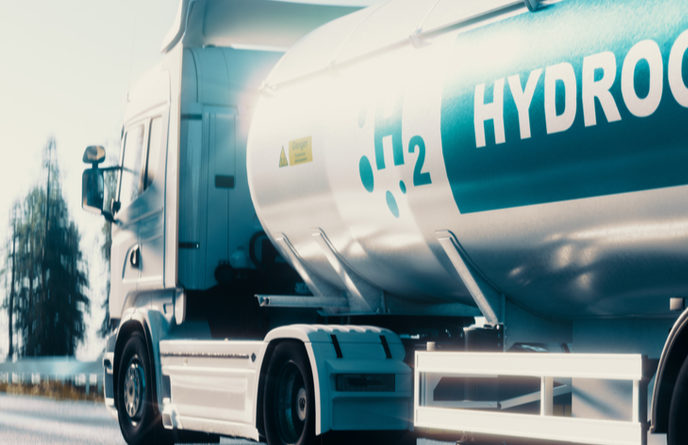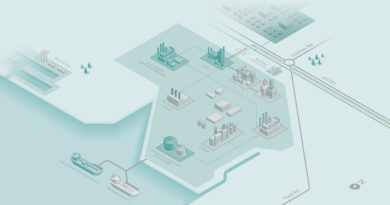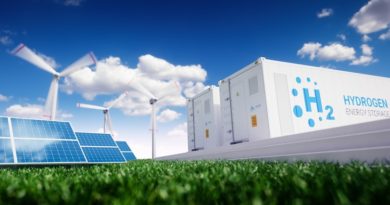
Generalizing the use of hydrogen in Europe to strengthen Europe’s energy autonomy
With the adoption of the European Green Deal, hydrogen and its potential for building bridges between electricity and fossil energy from gas with the aim of ensuring a successful green transition and achieving climate goals has become a widely discussed topic in both academic and political circles in the EU.
In this context, a hydrogen strategy for a climate-neutral Europe, presented by the European Commission in July 2020 and aimed at boosting hydrogen use in the industry and transport sectors, serves as an important signal that the EU recognizes a crucial significance of low-carbon energy from hydrogen in the transition to a decarbonized economy.
If the European Union is serious about its climate ambitions, it needs to be admitted that the electric scenario is not an economically and technically viable option for many industries. This is where the potential of hydrogen, which reconciles gas and electricity, comes to the fore.
It is widely acknowledged that hydrogen can contribute to the decarbonisation of such industries where other alternatives to fossil fuels might turn out to either be not feasible or substantially more expensive. Therefore, this energy source today seems to be the only possible option to effectively decarbonize many sectors, including heavy industries, transport, and heating, at the same time addressing demand and seasonality.
The devil will be in the details, but the fact that the Commission recognizes the importance of low-carbon energy, both from gas and from hydrogen, in the transition to a decarbonized economy is an important signal. Our industry needs certainty about its energy supply and a clear pathway for its transition.
The biggest step with regards to facilitating the use of hydrogen on the EU level so far has been the Hydrogen and Decarbonised Gas Market Package, published by the European Commission in December 2021, which highlights the importance of hydrogen in the future energy system. This package is a crucial counterpart to the Fit For 55 package to develop this pathway from a regulatory side. It really has to facilitate the integration of renewable and low-carbon gases in the exiting gas grid and enable the development of dedicated hydrogen infrastructure and market, allowing hydrogen to become a key component of the energy sector. This gas package must be the tool to deliver this ambitious decarbonisation trajectory in the gas sector.
A European Hydrogen Backbone can only create an opportunity to accelerate decarbonisation of the energy and industrial sectors whilst ensuring energy system resilience, increased energy independence and security of supply across Europe with the right political framework.
We need to ensure investments in the conversion of natural gas networks, which will form an essential basis of the future hydrogen infrastructure. Otherwise, the development of a hydrogen infrastructure connected throughout Europe will not be possible in the long term, as the necessary line sections are not available and accordingly no internal market for hydrogen trading is created.
We have to focus on the unbundling requirements for H2 infrastructure operators. The proposal provides for horizontal unbundling, which requires natural gas system operators to carry out hydrogen transport in a separate company. Two points are highly problematic: Cross-subsidisation is possible as an exception and under conditions (transparent, temporary, etc.) and the establishment of a European Network of Network Operators for Hydrogen (ENNOH), which develops the Hydrogen Network Development Plan and Network Codes. With ENTSOG there is already an established player who is best suited for the role. The unbundling schemes for the natural gas and electricity sectors have proved their worth. There is neither an objective necessity for the new regulation obviously planned by the Commission nor have the possible disadvantages of the transfer of the previously applicable unbundling rules been explained. The role of the Gas Package as a regulatory framework creating necessary incentives to decarbonize gas sector is crucial in ensuring that the 2030-50 climate goals will be reached.
A high priority in the context of increased use of hydrogen should be given to introducing measures aimed at improving energy security and resilience of the EU’s energy sector: an issue emphasized in the Gas package. As stressed by the EPP group in its assessment of the ‘Fit for 55’ Package, along with the development of dedicated hydrogen infrastructure and domestic hydrogen market, strategy and infrastructure for hydrogen imports from partner countries should be established without creating new dependencies. One of the ways to do that is to ensure that the Gas package is in line with the Third Energy Package and its unbundling rules.
Hydrogen infrastructure development is a way of moving forward towards a massive rollout of hydrogen. The build-up of such infrastructure should take into account the necessity to navigate and adjust the rollout to the hydrogen demand in the process of transition.
Moreover, the general principles of infrastructure regulation should be established to ensure an EU-wide harmonization of standards. Infrastructure that enables a robust and independent energy market is a key component to ensure security of supply in the European Union.
As pointed out by the EPP group with regards to the renewables infrastructure, the inclusion of renewable and low-carbon gases, including hydrogen, in the exiting gas grid should be promoted, to allow hydrogen to become a key component of the energy sector. Making use of synergies between gas and electricity will allow to make a transition in the most cost-efficient way possible: via integrated network planning between hydrogen, gas and electricity. Therefore, integrating these three energy sources together and enabling a joint planning of energy networks is of utmost importance for determining overall optimal pathways for transition.
Finally, in order to not only ensure security of supply but also to create a globally competitive hydrogen industry, special attention should be placed on fostering the research, development and innovation across all key hydrogen technologies, which should be complemented by favorable regulations facilitating hydrogen market ramp-up.
To sum up, a clear regulatory framework for hydrogen use is needed in order to, firstly, avoid monopolies and create an open and competitive market in the EU, and, secondly, ensure security of supply and resilience of the EU’s energy system. A balance between sustainability, affordability and security of supply should therefore be found.




